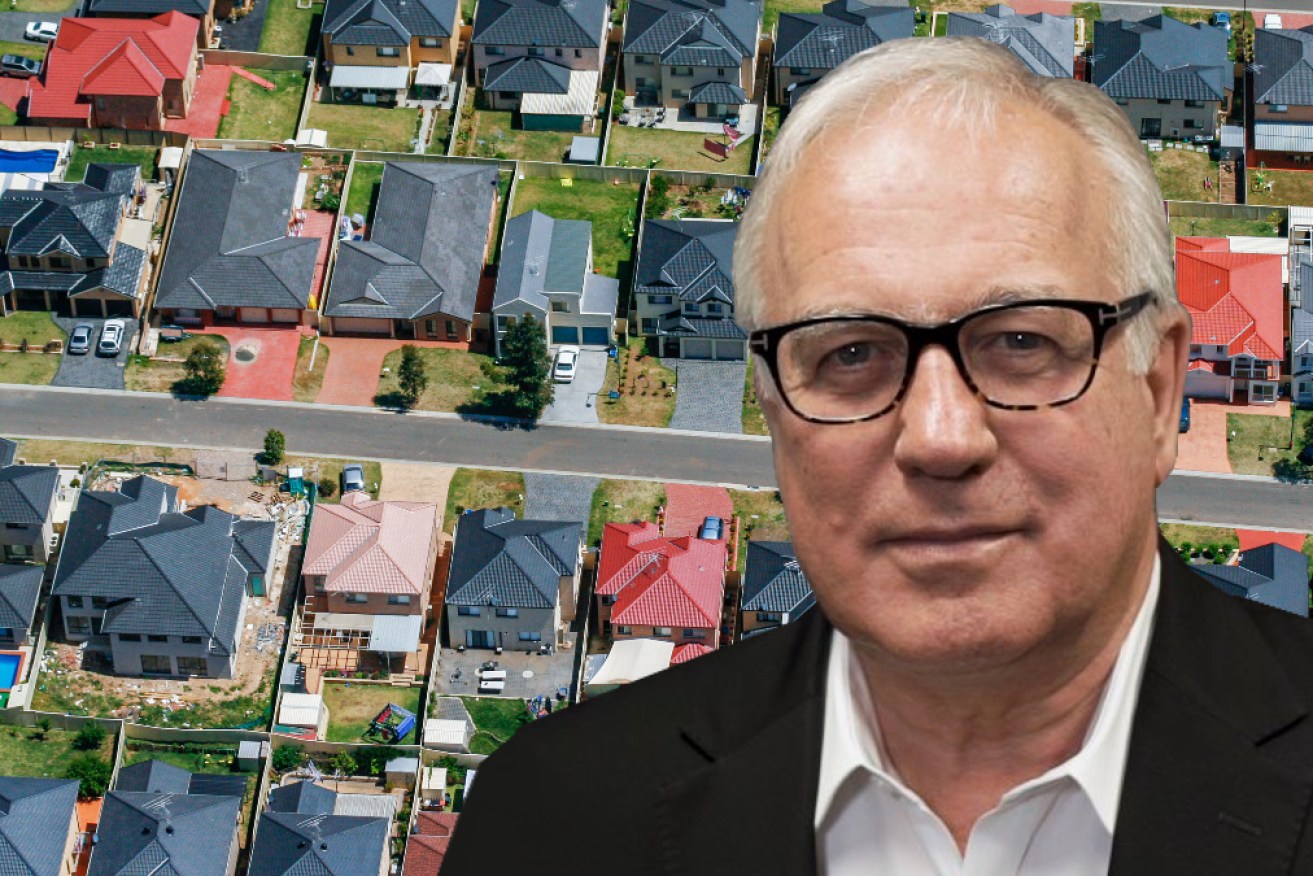Alan Kohler: Curbs on risky lending won’t solve the housing affordability crisis


Higher house prices and interest rates are costing Australian families an extra $240 billion a year. Photo: TND/Getty
Any day now the banking regulator, APRA, is going to do “macroprudential” policies, after the Treasurer Josh Frydenberg this week gave it a superfluous green light.
It means APRA will soon tell the banks to make fewer risky loans.
What, you might be wondering, are they waiting for?
Why have the banks been allowed to make so many risky loans already, with the result that house prices have surged 18 per cent in the past 12 months?
Good question.
There are two reasons for this in my view:
- House prices are NMD (not my department)
- Any attempt to rein in lending and bring down house prices will be fighting against government policy.
APRA is responsible for the health of the banking system and the Reserve Bank is responsible for inflation and employment.
Neither is responsible for housing affordability – it’s not their departments.
Whose department is it? Well, it’s the government’s if it’s anybody’s, but all of its policies are designed to push house prices up, not down.
For a start, there are the tax breaks for investors that the Morrison government campaigned against removing in 2019, and then this year it continued a scheme to allow some people to buy a house with a loan to value ratio of 95 per cent – that is a deposit of 5 per cent.
One of the actions APRA might take is to limit loans with an LVR (loan to value ratio) of more 80 per cent, in direct conflict with government policy.
But there’s nothing new about this.
Decades of government policy
In his submission to the current Senate inquiry into housing affordability and supply in Australia, economist Saul Eslake says government policies started pushing up house prices 58 years ago.
“…starting from 1963, when John Howard (as president of the New South Wales Young Liberals) managed to persuade Sir Robert Menzies to promise cash grants to first-home buyers at that year’s federal election, the emphasis of government housing policies has gradually shifted away from boosting the supply of housing, instead to inflating the demand for it.”
Up to that point, federal and state housing policies were entirely focused on increasing supply, through encouraging new estates with zoning and encouragement for developers, and government infrastructure.
But over the past 50 years, interventions in the housing market by all governments have involved tax breaks for home owners (negative gearing and zero or discounted capital gains tax) and a series of first-home buyer grants and concessions, all of which increased demand.
Meanwhile, developer taxes and restrictions on new housing estates, along with the chronic underfunding of transport infrastructure have reduced supply.
Result: Higher prices.
The reason for this is not hard to find: At any given election, about 11 million voters own at least one house and about 100,000 voters want to buy one.
Politics is a short-term numbers game, while increasing the supply of housing is a long-term one with no clear winners.
Giving 11 million people more wealth through higher house prices, and giving cash to the would-be owners so they can bid house prices even higher, is the obvious path to political success.
Macroprudential actions by regulators are short-term fixes designed briefly to offset the impact of tax breaks, grants and low interest rates.
Their aim is not necessarily to make houses more affordable (APRA doesn’t care about that, although that is what happened last time), but to protect the banks from themselves.

In June 2020, Scott Morrison announced home buyer grants would be a major part of what he called a ‘tradie-led recovery’.
Short-term fix
The last time APRA applied macroprudential controls in 2015 it limited interest-only loans to 30 per cent of the total, having earlier limited growth in investor loans to 10 per cent.
Banks got the message, the steam came out of the market and house prices fell about 10 per cent.
Since then, house prices have surged, especially in the past 12 months.
In 2015, the average Australian mortgage was $450,000 – it’s now $600,000; the housing-debt-to-income ratio was 80.3 – it’s now a record high 102.1; the ratio of house prices to adult disposable income was then nine times – it’s now 12.
So two things are clear: Macroprudential stuff works briefly and then doesn’t, and the stakes are much higher now.
The current average mortgage of $600,000 can be afforded because the average interest rate across all loans (according to APRA and the RBA) is 2.82 per cent, or $16,920 a year, on the average loan, which is 40 per cent of the average after-tax wage (according to the ATO).
I remember (with a shiver) when the variable mortgage interest rate got to 17 per cent, but more realistically it averaged 7 per cent between 1999 and 2012, before the RBA’s epic battle against low inflation got it down to where it is now.
Seven per cent of $600,000 is $42,000, which is 97 per cent of the average after-tax wage.
So … the Australian household sector would go entirely broke if interest rates went back to where they were between 1999 and 2012.
Which means they can’t.
And that means this is not just a housing affordability crisis, but a monetary policy crisis, and macroprudential fiddling by APRA won’t solve it.
The only things that will solve it are a concerted effort to increase housing supply through easier zoning and transport infrastructure spending, plus the removal of tax breaks like negative gearing and discounted capital gains tax to reduce demand.
Oh, and no rate hikes for a very long time.
Alan Kohler writes twice a week for The New Daily. He is also editor in chief of Eureka Report and finance presenter on ABC news








